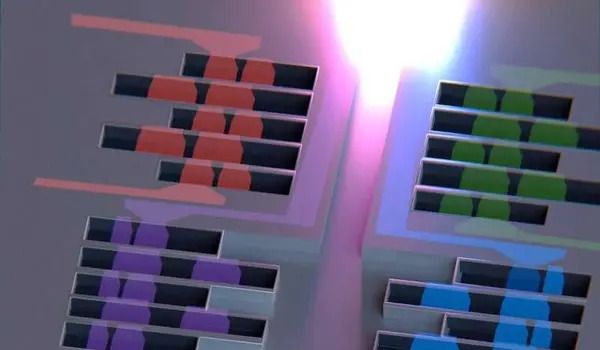Scientists at the University of Florida have developed a method for harnessing semiconductor technology to create processors that dramatically improve the efficiency of delivering large volumes of data around the world. The breakthrough, which appears on the current cover of the magazine Nature Electronics, has the potential to revolutionize the landscape of wireless communication at a time when developments in AI are driving up demand substantially.
Traditionally, wireless communication has depended on planar processors, which, while effective, are confined by their two-dimensional structure to work within a narrow range of the electromagnetic spectrum. The UF-designed technique takes advantage of semiconductor technology to accelerate wireless communication into a new dimension — quite literally.
Researchers have successfully switched from planar to three-dimensional computers, ushering in a new era of compactness and efficiency in data transmission.
A city’s infrastructure can only handle a certain level of traffic, and if you keep increasing the volume of cars, you have a problem. We are approaching the maximum quantity of data that we can efficiently transport. The planar construction of processors is no longer practicable since it limits us to a very narrow range of frequencies.
Roozbeh Tabrizian
Roozbeh Tabrizian, Ph.D., an associate professor in UF’s Department of Electrical and Computer Engineering, whose team developed the three-dimensional processor, said it marks a pivotal moment in the evolution of wireless communication as the world becomes increasingly reliant on seamless connectivity and real-time data exchange.
“The ability to transmit data more efficiently and reliably will open doors to new possibilities, fueling advancements in areas such as smart cities, remote health care, and augmented reality,” he said.
Currently, data on our cellphones and tablets is turned into electromagnetic waves that travel between billions of users. Filters, sometimes known as spectral processors, transport data across multiple frequencies in the same manner as highway architecture and traffic signals enable effective traffic flow in cities.
“A city’s infrastructure can only handle a certain level of traffic, and if you keep increasing the volume of cars, you have a problem,” Tabrizian warned. “We are approaching the maximum quantity of data that we can efficiently transport. The planar construction of processors is no longer practicable since it limits us to a very narrow range of frequencies.”

With the introduction of AI and autonomous devices, the growing demand will necessitate the installation of many more traffic lights in the form of filters at various frequencies to transport data to its intended destination.
“Think of it like lights on the road and in the air,” Tabrizian said. “It turns into a mess. It no longer makes sense to produce a semiconductor for only one frequency.
Tabrizian and his colleagues at the Herbert Wertheim College of Engineering construct the three-dimensional nanomechanical resonator using CMOS technology, which stands for complementary metal-oxide-semiconductor manufacturing.
“By harnessing the strengths of semiconductor technologies in integration, routing and packaging, we can integrate different frequency-dependent processors on the same chip,” Tabrizian said. “That’s a huge benefit.”
Three-dimensional processors take up less physical area while providing superior performance, and they offer infinite scalability, allowing them to meet expanding demands.
“This entirely new type of spectral processor, which integrates different frequencies on one monolithic chip, is truly a game changer,” stated David Arnold, associate chair for faculty affairs in the Department of Electrical and Computer Engineering. “Dr. Tabrizian’s revolutionary technique for multi-band, frequency-agile radio chipsets not only addresses a major manufacturing barrier, but it also enables designers to envision totally new communication tactics in an increasingly congested wireless world. Simply put, our wireless gadgets will be more reliable, faster, and secure.”
















